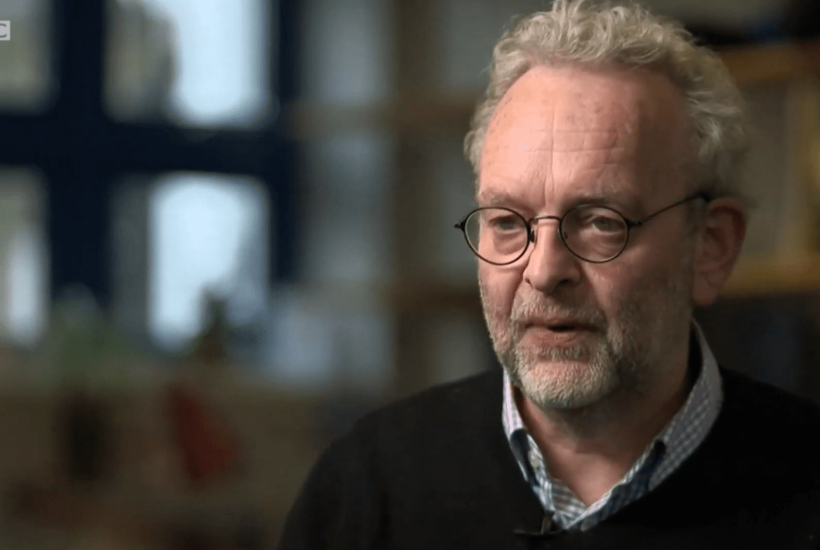The latest Sage papers have been published , envisaging anything from 200 to 6,000 deaths a day from Omicron depending on how many more restrictions we’ll get – up to and very much including another lockdown. Earlier today I had an unexpected chance to ask questions of Graham Medley, the chair of the Sage modelling committee.
He’s a professor at London School of Hygiene & Tropical Medicine (LSHTM) which last weekend published a study on Omicron making the case for more restrictions. In a note sent to clients, JP Morgan pointed out that in all of its scenarios. -even the ‘optimistic’ once – LSHTM had assumed that the Omicron variant is just as dangerous as Delta. Why? ‘Evidence from South Africa suggests that Omicron infections are milder,’ JP Morgan said. Adjust for this, it found, and the picture changed dramatically:-
‘Bed occupancy by Covid-19 patients at the end of January would be 33% of the peak seen in January 2021. This would be manageable without further restrictions.’
So JP Morgan had spotted something pretty big; tweak one assumption (on severity) and – suddenly – no need for lockdown.
Why was this scenario left out? Why would this fairly-important and fairly-basic fact not be presented by modellers to ministers – and to the general public? There is no one better to ask about how Sage works than Prof Medley, so I was thrilled for the chance to speak to him on Twitter. It was kind of him to make the time (he’s still going, as far as I can make out).
The Sage paper-drop tonight – the 6,000-deaths-a-day one – is referred to as a ‘scenario,’ not a prediction: Prof Medley emphasises the distinction. Saying something could happen is not saying that there’s a realistic chance of it happening. But then why do SAGE modellers publish some scenarios and not others? I then jumped to ask Prof Medley.



Apologies for the language at the end, but it was the last tweet that he replied to on this thread.
Revealingly, he seemed to think my question odd: if it’s quite plausible that Omicron is mild and doesn’t the threaten the NHS, what would be the point of including that as a ‘scenario’? He seemed to suggest that he has been given a very limited brief, and asked to churn out worse-case scenarios without being asked to comment on how plausible they are.
‘We generally model what we are asked to model. There is a dialogue in which policy teams discuss with the modellers what they need to inform their policy.’
Might this remit mean leaving out just-as-plausible, quite-important scenarios that would not require lockdown?
‘Decision-makers are generally on only interested in situations where decisions have to be made.’
Note how careful he is to stay vague on whether any of the various scenarios in the Sage document are likely or even plausible. What happened to the original system of presenting a ‘reasonable worse-case scenario’ together with a central scenario? And what’s the point of modelling if it doesn’t say how likely any these scenarios are?
From what Prof Medley says, it’s unclear that the most-likely scenario is even being presented to ministers this time around. So how are they supposed to make good decisions? I highly doubt that Sajid Javid is only asking to churn out models that make the case for lockdown. That instruction, if it is being issued, will have come from somewhere else.
Prof. Robert Dingwall, until recently a JCVI expert, has said that Medley’s candour reveals “a fundamental problem of scientific ethics in Sage” – ie, a hardwired negativity bias. “The unquestioning response to the brief is very like that of SPI-B’s behavioural scientists,” he says and suggests that the Covid inquiry looks into all this.
At a time when we have just been given a new set of ‘scenarios’ for a new year lockdown it might be good if someone – if not Prof Medley – would clear up what assumptions lie behind the new 6,000-a-day-dead scenario, and if emerging information from South Africa about Omicron and its virulence have been taken into account. And how probable it is that a double-jabbed and increasingly boosted nation (with 95 per cent antibody coverage) could see this worst-case scenario come to pass.
I’ve asked Prof Medley to come on Spectator TV, to have a longer conversation outside Twitter. He has written for us before so I hope he accepts. For now, although I often curse the platform, I should thank Twitter for giving me the chance to ask some questions of someone so relevant to such an important debate.
Got something to add? Join the discussion and comment below.
Get 10 issues for just $10
Subscribe to The Spectator Australia today for the next 10 magazine issues, plus full online access, for just $10.




















Comments
Don't miss out
Join the conversation with other Spectator Australia readers. Subscribe to leave a comment.
SUBSCRIBEAlready a subscriber? Log in